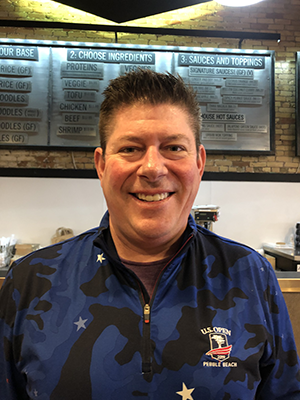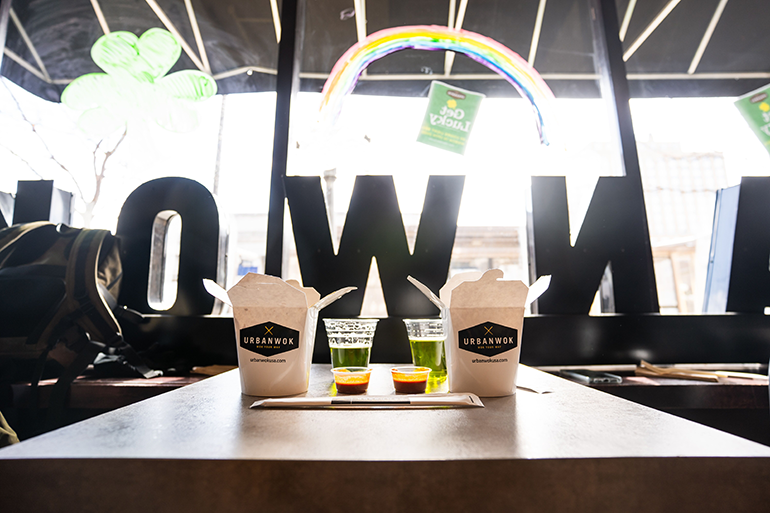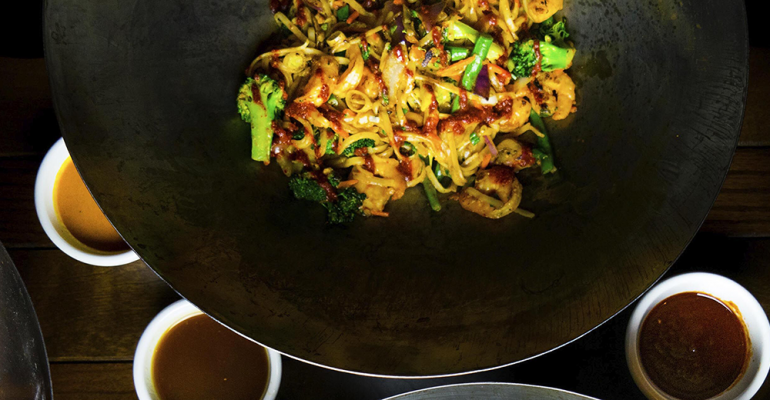About a week before Minnesota Gov. Tim Walz ordered the closure of dine-in operations at restaurants to curb the spread of the novel coronavirus, Urban Wok owner Mark Toth took a hard look at his books.
The former Chili's Grill & Bar manager discovered that most of his revenue, roughly 80%, was generated from off-premise channels. So, ahead of mandated dining room closures, he shutdown his small 50-seat dining room in St. Paul, Minn., so he could focus on carryout and delivery.
With dining room closures across the U.S. entering their second month, Toth’s fast-casual build-your-own rice and noodle bowl concept is faring well amid the pandemic. On any given week, the one-unit location (with a few more in the works) has seen revenue up anywhere from 125% to 200%.
 “We've been really, really, really, really busy,” Toth (pictured) told Restaurant Hospitality in a phone interview this week.
“We've been really, really, really, really busy,” Toth (pictured) told Restaurant Hospitality in a phone interview this week.
He said consumers like the concept because it travels well, and there’s minimal touch points when ordering through Urban Wok’s digital channels and kiosks.
But that’s not something he turned on overnight during the COVID-19 pandemic.
When he opened the concept in October 2018, Toth said he wanted to create a restaurant built for the future. That meant providing customers frictionless ordering through the restaurant’s website, app and in-store kiosks. The restaurant is also cashless.
Last year, he began working with third-party delivery operators, but only after negotiating terms that would ensure he could attract the kind of volume and reach that would make delivery profitable.
He also made sure he had the right technology in place so that delivery orders would be directly processed through the restaurant's POS system. No third-party tablets.
But the key delivery move he made a year ago was to move to premium pricing. The term refers to menu price hikes on delivery apps. It’s a strategy many national chains like Noodles & Company, Del Taco and El Pollo Loco have taken, prior to COVID-19, to offset hefty third-party delivery fees. Most brands markup their third--party menus by about 10%.

Urban Wok has been “really, really, really, really busy” with takeout and delivery.
At Urban Wok, Toth said his third-party prices are about 30% more. It’s been that way for a year.
By the time COVID-19 hit, he said his restaurant was primed and ready for the onslaught of on-demand meals.
“If we didn't make the changes that we made a year ago with third-party delivery and how we operate, we'd be dead in the water based on the volume. We couldn't operate,” said Toth, who plans to open additional restaurants including in Atlanta, San Diego, Calif., and Scottsdale, Ariz.
For other restaurants, flipping on the off-premise switch, especially delivery, hasn’t been as easy. Toth is sympathetic as he has a lot of friends running full service restaurants in the Twin Cities.
“This is a hard pivot when your dine in is 85%-90% of your volume,” he said. “They have to figure out new menus. They have to change the model completely. And that's not easy to do last minute. That’s a tough nut to crack.”
For our most up-to-date coverage, visit the coronavirus homepage.
Contact Nancy Luna at [email protected]
Follow her on Twitter: @fastfoodmaven

